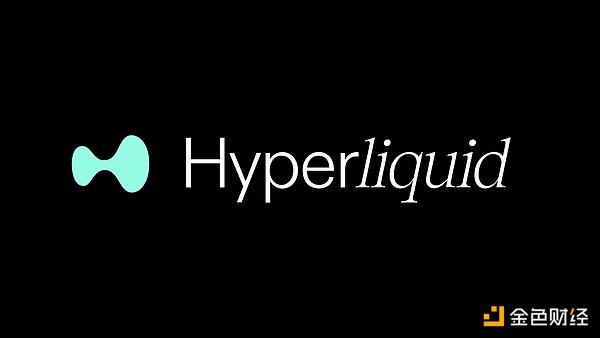By ian.btc | 0xWorkhorse, Translated by Shaw Jinse Finance
Amid the liquidation storm that rocked the cryptocurrency market last Friday, one platform stood out: Hyperliquid. While other platforms struggled to remain solvent, the platform generated $41.5 million in fees over a single weekend and delivered a 10% return to Hyperliquid (HLP) depositors.

Products with this level of resilience are rare—so what is Hyperliquid, how does it work, and how can we get involved? Let's start at the beginning. Hyperliquid is a decentralized perpetual futures exchange (Perp DEX) built on its own high-performance Layer-1 blockchain, the HyperEVM. Launched by Hyperliquid Labs in 2023, the protocol quickly became the dominant player in the decentralized perpetual swap market—holding over 73% of the market share by mid-2025 and peaking at over $59.5 billion in daily trading volume. At the heart of this success lies the Hyperliquid Protocol (HLP) Vault—a protocol-governed, community-owned liquidity pool. It allows everyday users like you and me to deposit stablecoins like USDC and earn a yield through intelligent, automated trading strategies. Unlike traditional automated market makers (AMMs), which simply rebalance token pairs, HLP takes a more hands-on approach: it actively trades across over 130 perpetual contract markets, handles liquidations and arbitrage, and then returns all profits to depositors. The key point here is that they return all HLP revenue to depositors. This means that HLP transforms pooled deposits into a powerful counterparty—earning fees, funding rates, and spreads in the process. To better understand it, we can think of it as a diversified business model for professional market makers: individuals, decentralized autonomous organizations (DAOs), and even large institutions can participate without requiring deep trading knowledge or huge initial capital. As of the time of writing in October 2025, HLP's total locked value (TVL) is approximately $300 million to $400 million, and its returns are stable, often rising against the trend when the cryptocurrency market declines. HLP operates within Hyperliquid's HyperCore engine, which powers a fully on-chain centralized limit order book (CLOB). This engine delivers sub-second finality and processes over 100,000 orders per second, reaching the speed of centralized exchanges. All of this must keep pace with the volume of transactions flowing through the vault. The vault itself benefits entirely from the community users who provide liquidity for trading. Therefore, unlike user-created vaults, HLP is owned by the protocol itself and charges no fees. This means that 100% of profits go directly to depositors and are distributed based on the amount of users' stake.
Key Aspects

1.) Liquidity Provision
When a trade can't immediately find a match, HLP steps in and acts as a counterparty. This narrows the spread and ensures that trades flow smoothly—in other words, it makes trades feel "expected," meeting the standards set by platforms like Robinhood. For example, during Friday's liquidation storm, HLP ably executed the liquidation process amid $10 billion in platform liquidations, helping Hyperliquid maintain 100% uptime while many competitors struggled. This means HLP has access to stronger liquidity even during periods of market volatility, but also exposes it to short-term risk if market trends turn against it. 2.) Price Oracle and Funding Rates: A decentralized oracle retrieves spot prices from major exchanges every three seconds. This anchors the funding rate and liquidation point, helping to prevent manipulation and keep prices within 1% of a real-world reference price. For example, the oracle uses a weighted median value from sources such as Binance (weight 3) and OKX (weight 2), calculated by validators to ensure robustness. Building on this foundation, the HIP-3 upgrade can integrate more assets without changing the core oracle setup, ensuring fair fund distribution even for new and exotic asset pairs like commodities. 3.) Liquidation If traders are overleveraged, HLP steps in to absorb and manage these positions. It collects fees and bonuses while maintaining platform stability. To be clear, this funding comes from HLP's own approximately $400 million reserve, separate from the protocol's $1.3 billion bailout fund. This means HLP acts as a "non-toxic liquidator," profiting from disruptions—such as its $41.5 million profit in a single day during Friday's crash—while avoiding bad debts. However, in extreme tail events, it combines with the Auto-Deleveraging (ADL) mechanism (see below) to spread losses. 4.) On-Chain Transparency: From trading to liquidation, all operations are centralized within a single block and auditable by anyone. Deposits are initiated from Arbitrum using the native USDC bridge to the HyperEVM, with fees paid in ETH. Tools like the Hyperliquid explorer allow users to verify everything in real time, building trust. This transparency has been particularly prominent during recent market volatility, with on-chain data confirming zero downtime and a fair mechanism. 5.) Auto-Deleveraging (ADL) Mechanism: When liquidations deplete counterparty funds in extreme markets, Auto-Deleveraging (ADL) is activated as an emergency measure. It sorts contract positions by profit/loss and leverage to spread losses. For example, it may close highly leveraged, profitable positions to balance the ledger and protect the entire system. This aligns closely with HLP, spreading risk across the entire vault. For example, last Friday, open interest fell from $15 billion to $6 billion without generating any bad debts. This improves stability for HLP depositors, but in rare cases, it could potentially "limit" the returns of individual winners. 6.) Revenue Distribution All fees generated from trading, funding, and liquidations flow directly into HLP and are distributed proportionally to depositors, with no fees charged. For example, this community-owned model has historically generated an annualized return of approximately 17%, surging to 165% to 200% after Friday's frenzied trading—though this will eventually return to normal. This means users will receive a stable passive income, and combined with HIP-3's permissionless market, it could increase overall trading volume and fees, further boosting returns. The HLP Vault uses a proprietary algorithm carefully crafted by the Hyperliquid team. The team has extensive experience in traditional financial market making, including senior members from companies such as Jane Street, which are well-known for their high-performance trading systems. This expertise supports automation, 24/7 operation, and the ability to adjust based on on-chain data. 1.) High-Frequency Market Making: HLP places and adjusts buy and sell orders around the "fair" price to capture the bid-ask spread. For example, it bets on a short-term price rebound to normal levels while avoiding significant directional risk. However, this exposes it to the risk of adverse selection—trading with informed counterparties—which the team mitigates through real-time oracle data and order book analysis. 2.) Funding Rate Arbitrage: This exploits the gap between long and short funding rates, typically with a slight bias toward net short positions. This strategy generates consistent returns for HLP when retail investors place large bullish bets. For example, during a bull market like the one in early 2025, this net short bias generated positive returns from overleveraged long positions, contributing to HLP's 50% return in 2024. However, it's worth noting that in a deep bear market, without dynamic hedging, a funding rate rollover could put pressure on yields.
3.) Dynamic Adjustment
As the treasury grows, the strategy will expand to more markets and adapt to market volatility. This can smooth returns, but growth may slow slightly due to increased competition. Furthermore, HIP-3's permissionless listing mechanism can more quickly expand into new asset classes, such as commodities or meme coins, thereby enhancing scalability without manual intervention.
4.) Liquidation and Fee Collection
HLP actively participates in liquidating highly leveraged positions, earning bonuses and a portion of trading fees. Essentially, this converts platform risk into reward—we already know how well it performed on Friday. This means a stable income stream, albeit one tied to overall market activity. Essentially, this active approach distinguishes HLP from passive strategies like GMX's GLP, which bet on long-term asset growth. HLP's largely neutral response to market movements allows it to match centralized exchanges, with minimal slippage (0%-0.01%) even for large trades. Performance If all goes as expected, HLP could become the best tool for hedging against significant pullbacks, making it well-suited for bear market strategies. Since its launch in May 2023, HLP has achieved strong risk-adjusted returns through its automated strategies. As of this writing, HLP's cumulative profit and loss (PnL) is approximately $121.8 million, representing a total return of approximately 450%, given the recent spike in volatility. This translates to an annualized percentage yield (APY) of approximately 65% to 70% over its approximately 2.4-year lifespan, though the historical average yield has hovered around 17% during stable periods due to variations in compounding and TVL. In short, the performance has been strong—very compelling, and honestly, a little crazy. Summary: HLP has evolved from a niche feature in 2023 to become the go-to market maker for DeFi. Milestones such as permissionless listing, spot trading, and the HyperEVM debut in February 2025 have opened the door for more integrations. HIP-3 also introduces new improvements. In a bear market, I believe HLP will perform well—better than most DeFi platforms—and can be considered a hedge, especially in volatile markets like the recent ones. The platform has successfully built resilience and is able to profit from the kinds of disruptions that hurt directional bets. It may not "pop" during a quiet winter, but due to its low-risk profile, it should be able to remain stable and generate positive returns (even if modest).
That being said, as I begin preparing for a long hibernation period in the coming bear market, HLP will be part of that strategy.
 Anais
Anais




